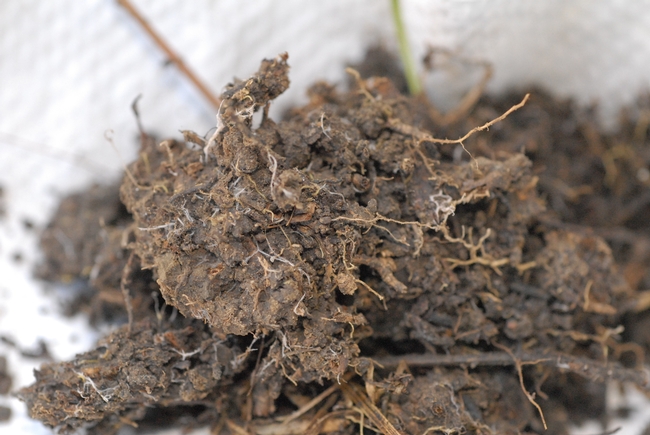Washington State University and UCCE Ventura County, respectively
Soils found in home gardens and public landscapes usually bear little resemblance to the original soil. Native soils are formed through centuries of interactions between climatic factors, local environmental factors, and the biological components of the soil. In contrast, soils found in developed areas are often distinctly layered, compacted, and artificially amended. Commercial topsoils, which are often called designed soils or landscape fill, bear little resemblance to natural topsoil as they generally contain abundant organic material and sand but relatively little topsoil. Unfortunately, many gardeners and landscape professionals are unaware of these differences and how they affect soil functionality and plant life. This lack of understanding, combined with popular soil management practices and products, can create soil conditions that are injurious to soil and plant life. In this article we deconstruct four common soil management myths and offer better methods to manage urban soils sustainably.
Most people with a personal or professional interest in gardens and landscapes are familiar with the soil triangle. The relative percentages of clay, silt and sand determine soil texture and function. Uncompacted sandy and silty soils are well drained, but nutrient poor; uncompacted clay soils are nutrient rich but have slow drainage. The perfect soil for growing plants is one that has adequate drainage and nutrient availability (Handrek and Black, 2002). Such soils are loams and contain mixtures of clay, silt and sand. Natural soils also contain organic matter around 1-6% of the total soil weight. Wetland soils, in contrast, have much higher levels of organic material. All of these natural soil types develop over centuries of interactions among climatic, geographic, environmental, and biological factors.
Read On:
Soil Myth Busting for Extension Educators: Reviewing the Literature on Soil Structure and Functionality
Attached Images:
